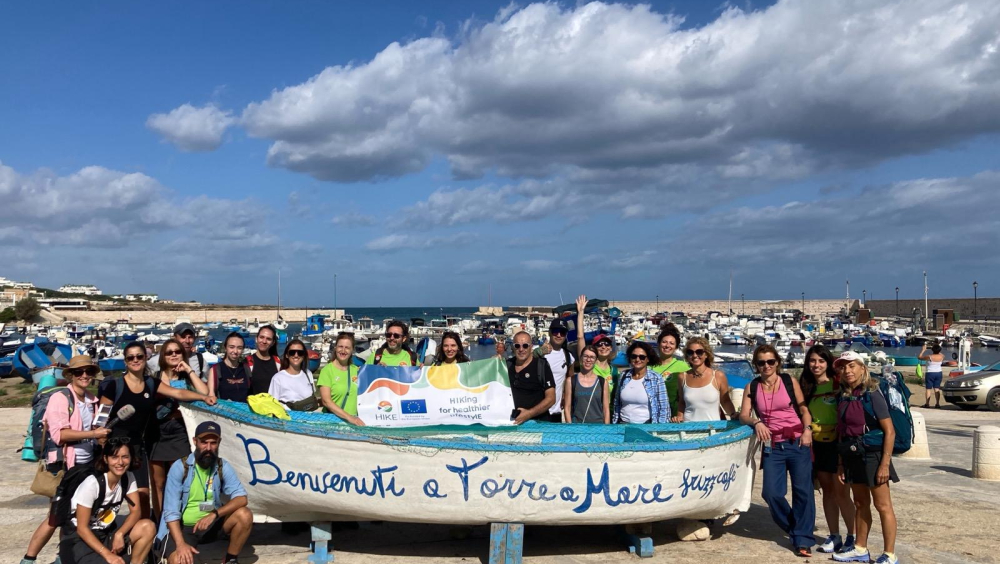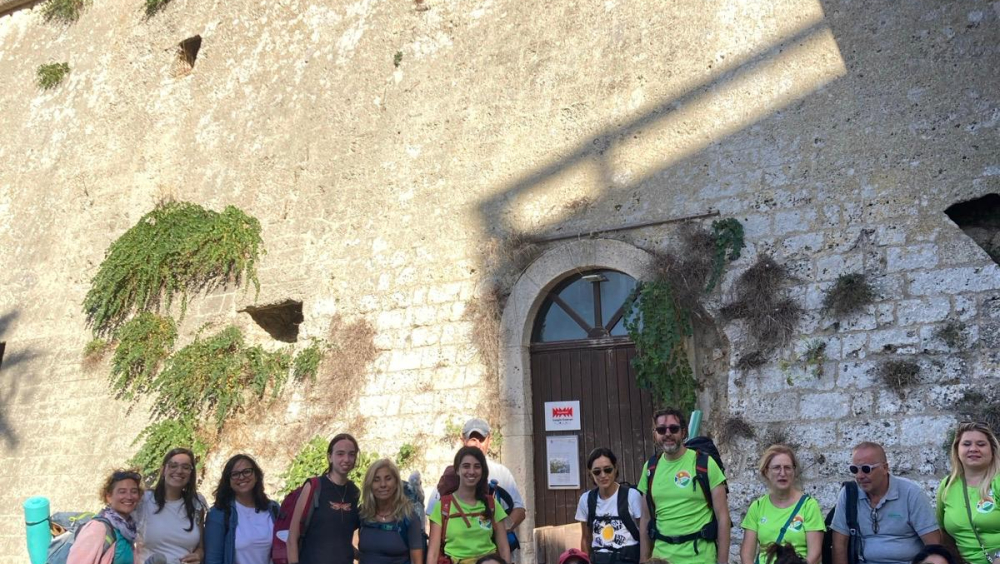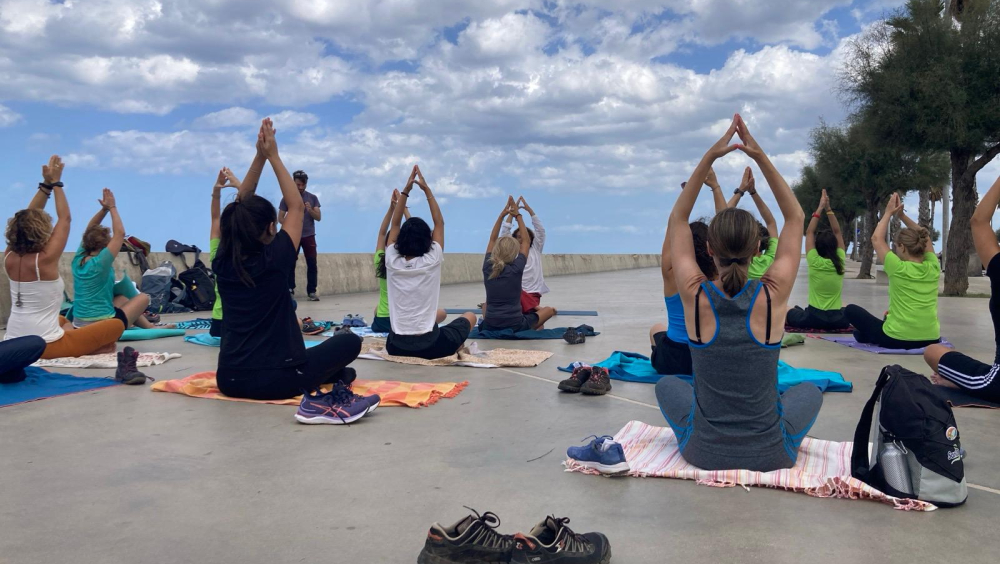Road to Rome - heritage and wellbeing in one HIKE
The Via Francigena or the “Road to Rome” is an ancient pilgrimage route that connects Canterbury, England, via Rome to Brindisi, Italy, passing through France and Switzerland. It was first documented in 990 AD by the Archbishop of Canterbury, Sigeric the Serious, who recorded his journey to receive the pallium (a symbol of his authority) from the Pope. During the Middle Ages, the Via Francigena became a major route for pilgrims traveling to Rome, as well as merchants and armies. It played a crucial role in cultural and economic exchanges between Northern and Southern Europe.
Over time, the route lost its importance with the rise of other trade roads and transportation methods, but in recent decades, it has been revived as a popular path for modern pilgrims and hikers. Today, it is recognized as a Cultural Route of the Council of Europe and attracts thousands of travelers seeking a historical and spiritual journey on foot or by bicycle.
Travelling through the Via Francigena is an amazing journey, from Canterbury to Rome, to the very end of Apulia. To cross the entire route, a traveller would need about 5 months on foot or 2 months by bicycle. Italy is crossed by the route from north to south, throughout colourful landscapes, breathtaking views over natural beauties or timeless architecture. Every single step guides to new discoveries and emotions. The gorgeous churches, cathedrals, palaces, abbeys and other architectural wonders are an exceptional part of the journey, telling us stories of artistic and technical evolution, from simplicity of Romanic style to the absolute geometrical rigor of the gothic one, ending between the elegant lines of the Italian renaissance and the baroque manners. The walker finds himself travelling through not only the Via Francigena, but through time itself, diving into an infinite pool of architectural styles, changing depending on the region or the city.
The AEVF (European association of the Via Francigena), is the managing body of the Via Francigena since 2001. Made up of over 240 European territorial authorities, AEVF acts as an impetus for the interlocutors of the itinerary enhancement project (in England, France, Switzerland, Italy), linking all the institutional levels - local, regional, national, European. Thanks to its work on preservation and promotion of the Via Francigena heritage, the AEVF has consolidated an effective governance model, which has earned it a certification of the Council of Europe Cultural Routes.
The AEVF believes that hiking along the route can be a 360-degrees experience, which would include physical activity, cultural exploration, discovery of natural and cultural heritage, local traditions, gastronomy and reinforcement of social connections. That is why the association launches its HIKE project in the Italian Apulia region. The European project HIKE :“HIKing for a healthier lifestylE" encourages local communities to keep a healthier lifestyle, enrich their understanding of a shared heritage, and create a community of hiking enthusiasts. Hiking along the Via Francigena, the participants conduct light physical activities, while looking at the stunning architectural wonders that the Italian heritage has to offer. Other important point is that hiking benefits not only your body, but the whole planet, for it is a great way of travelling without using any type of transport that could be polluting the environment. With this project we organize several hikes through the region of Apulia in Italy, but also in Turkey and Greece.
During the hikes the activities range from yoga sessions and environmental clean-ups to cultural excursions along historical routes such as the Via Francigena in Italy, the Via Egnatia in Greece and Tolerance Way in Turkey. These experiences allows the participants not only to improve physical well-being but also to connect deeply with Europe’s shared cultural heritage.
One of the legs of the HIKE days crosses the stunning city of Polignano a Mare, one of the most incredible gems nestled in the Adriatic coast. Both nature and architecture here are at their finest, making this city one of the most visited landmarks in the whole country. Here between houses and churches we can find the Chiesa del Purgatorio. Built in 1768 is an example of baroque, with a beautiful bell tower growing tall above the buildings. Inside the church has one only aisle, that takes to an elliptical dome with two chapels on the side. Five canvases adorn the church while the floor is tiled with majolica.
Another beautiful day with HIKE along the Via Francigena in Apulia passes by Ostuni. The bicycling trip starts in Torre Canne, towards Ostuni via the archaeological site of the Santa Maria di Agnano. Ostuni, known as the "White City", is a stunning town in Puglia, Italy, famous for its dazzling whitewashed houses and charming medieval streets. Perched on a hill, it offers breathtaking views of the Adriatic Sea and the surrounding olive groves. The town’s architecture is a fascinating mix of Mediterranean, Gothic, and Baroque styles. The Cathedral of Ostuni, with its elegant rose window, stands as a masterpiece of late Gothic art. Narrow alleys, stone arches, and hidden courtyards create a magical atmosphere, while the white buildings reflect sunlight, giving the town its signature glow. Ostuni’s beauty lies in its timeless charm, where history and nature blend seamlessly, making it one of the most enchanting destinations in Southern Italy.
The combination of sport and culture provides different benefits to our life and mental health, for example, improvement of our social well-being, psychological aspects, and perception and behavior.
The Via Francigena is a testament to the pan-European nature of cultural heritage, linking key historical events and movements that shaped Europe’s identity. As an ancient pilgrimage route from Canterbury to Rome and beyond, it has served as a bridge connecting diverse cultures, fostering economic exchanges, and promoting shared values of solidarity and cultural appreciation. Today, it continues to unite Europeans in a journey through history, nature, and spirituality.
Through our HIKE project, we aim to enhance awareness of Europe’s common heritage while promoting health and sustainability. This project integrates physical activity with cultural discovery, encouraging individuals to explore the Via Francigena and other historic routes like the Via Egnatia in Greece and Tolerance Way in Turkey. Funded by Erasmus+, HIKE offers activities such as guided hikes and cultural visits, yoga sessions, environmental clean-ups, and educational workshops.
The impact of our action at a European level is threefold. First, it strengthens the European identity by reviving an ancient cultural route that embodies shared values of democracy, intercultural dialogue, and historical preservation. Second, it fosters sustainable tourism and active lifestyles, minimizing environmental impact while promoting well-being. Finally, it builds a transnational network of local communities, institutions, and organizations dedicated to protecting and enhancing this extraordinary heritage.
By promoting the Via Francigena and initiatives like HIKE, we ensure that Europe’s cultural legacy remains accessible and relevant to future generations. Our approach emphasizes a bottom-up governance model, engaging local authorities and European institutions in a collaborative effort to safeguard and celebrate our common heritage. Through these actions, we not only walk through Europe’s past but also shape its future, reinforcing unity and mutual respect among its people.


